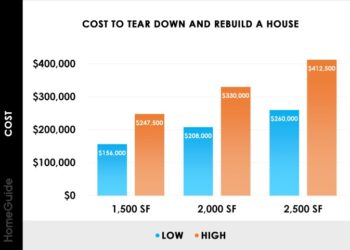Delving into the realm of financial metrics that every business should track opens up a world of possibilities and insights. From revenue growth to liquidity ratios, these metrics play a pivotal role in shaping strategic decisions and ensuring long-term sustainability.
As we navigate through the key financial metrics, monitoring cash flow, analyzing profitability, and understanding liquidity ratios, we uncover the heartbeat of a successful business operation.

Importance of Financial Metrics
Financial metrics play a crucial role in helping businesses make informed decisions, measure performance, and ensure long-term sustainability. By tracking key financial indicators, companies can gain valuable insights into their financial health and make strategic adjustments to achieve their goals.
Enhanced Decision-making
Tracking financial metrics provides businesses with real-time data that can be used to analyze trends, identify areas of improvement, and make informed decisions. For example, monitoring cash flow metrics can help a company determine if they have enough liquidity to cover expenses or invest in growth opportunities.
Business Growth and Sustainability
Financial metrics are essential for measuring the success and sustainability of a business over time. By tracking metrics such as profitability, revenue growth, and return on investment (ROI), companies can assess their overall performance and identify areas for improvement. This data is vital for making strategic decisions that will drive growth and ensure the long-term viability of the business.
Key Financial Metrics to Track
Financial metrics are crucial for evaluating the performance and health of a business. Tracking key metrics can provide valuable insights into areas that require improvement or optimization. Here are some essential financial metrics that every business should track:
Revenue Growth Rate
The revenue growth rate measures the percentage increase in a company's revenue over a specific period. It is a vital metric for assessing the company's ability to generate more income over time.
Gross Profit Margin
The gross profit margin indicates the percentage of revenue that exceeds the cost of goods sold. It helps in understanding how efficiently a company is managing its production costs.
Operating Cash Flow
Operating cash flow reflects the amount of cash generated from the company's core business operations. It is essential for evaluating the company's ability to meet its financial obligations.
Customer Acquisition Cost
Customer acquisition cost calculates the amount of money spent on acquiring a new customer. It is crucial for determining the effectiveness of marketing and sales strategies.
Lifetime Value
Lifetime value represents the total revenue a company expects to earn from a customer throughout their relationship. It helps in understanding the long-term value of each customer.
Working Capital Ratio
The working capital ratio measures a company's ability to meet its short-term financial obligations. It is calculated by dividing current assets by current liabilities.
Return on Investment (ROI)
Return on investment evaluates the profitability of an investment by comparing the gain from the investment to the cost of the investment. It is a crucial metric for assessing the success of capital expenditures.
Debt to Equity Ratio
The debt to equity ratio indicates the proportion of debt used to finance a company's assets compared to shareholders' equity. It helps in evaluating the company's financial leverage and risk exposure.
Monitoring Cash Flow
Monitoring cash flow is essential for businesses to ensure financial stability and sustainability. Cash flow represents the movement of money in and out of a business, providing insights into its liquidity and ability to meet financial obligations.
Analyzing Cash Flow Statements
There are several methods to analyze cash flow statements, including:
- Operating Activities: Focuses on the core business operations and how cash is generated from selling goods or services.
- Investing Activities: Involves cash transactions related to investments in assets, such as property, equipment, or securities.
- Financing Activities: Looks at cash flow from financing sources, like loans, equity financing, or dividends.
By examining these components, businesses can understand where their cash is coming from and how it is being used
.
Interpreting Cash Flow Data
Interpreting cash flow data involves analyzing metrics such as:
- Operating Cash Flow: Indicates the cash generated from core business operations.
- Free Cash Flow: Represents the cash available for distribution to investors, debt repayment, or reinvestment in the business.
- Cash Flow Margin: Shows the percentage of revenue converted into cash flow.
Understanding these metrics can help businesses make informed decisions about financial management and strategic planning.
Managing Operational Expenses and Planning for Growth
Tracking cash flow metrics is crucial for managing operational expenses and planning for growth. By monitoring cash flow regularly, businesses can:
- Identify and address cash flow gaps to avoid liquidity issues.
- Control expenses and optimize cash flow to ensure ongoing operations.
- Plan for future investments, expansions, or strategic initiatives based on available cash resources.
Overall, monitoring cash flow helps businesses maintain financial health and make proactive decisions to support long-term success.
Analyzing Profitability Metrics
Profitability metrics are crucial indicators of a business's financial health and performance. By analyzing metrics such as net profit margin, return on assets, and Earnings Before Interest and Taxes (EBIT), companies can gain valuable insights into their profitability and make informed strategic decisions.
Net Profit Margin
Net profit margin is a key metric that measures the percentage of revenue that translates into profit after all expenses are deducted. A higher net profit margin indicates that a company is operating efficiently and generating more profit from its sales.
The formula for calculating net profit margin is:
(Net Profit / Total Revenue) x 100
Return on Assets
Return on Assets (ROA) is another important profitability metric that evaluates how effectively a company is utilizing its assets to generate profit. It is calculated by dividing the net income by the average total assets. ROA provides insights into the efficiency of asset management and can help identify areas for improvement.
Earnings Before Interest and Taxes (EBIT)
Earnings Before Interest and Taxes (EBIT) is a profitability metric that reflects a company's operating performance without the impact of interest and taxes. EBIT helps in assessing the core profitability of a business before considering the effects of capital structure and tax rates.
It is calculated using the formula:
EBIT = Net Income + Interest + Taxes
By comparing and contrasting these profitability metrics, businesses can gain a comprehensive understanding of their financial performance and identify opportunities for growth and improvement. Analyzing these metrics can guide strategic decision-making, highlight areas of strength and weakness, and ultimately lead to enhanced profitability.
Understanding Liquidity Ratios
Liquidity ratios are essential financial metrics that assess a company's ability to meet its short-term obligations promptly. These ratios give insight into how easily a company can convert its assets into cash to cover liabilities.
Comparison of Liquidity Ratios
- Current Ratio:This ratio measures a company's ability to pay off its short-term liabilities with its short-term assets. It is calculated by dividing current assets by current liabilities.
- Quick Ratio:Also known as the acid-test ratio, this ratio is a more stringent measure of liquidity as it excludes inventory from current assets. It is calculated by subtracting inventory from current assets and then dividing by current liabilities.
- Cash Ratio:The cash ratio is the most conservative liquidity ratio, focusing solely on a company's ability to cover short-term liabilities with its cash and cash equivalents. It is calculated by dividing cash and cash equivalents by current liabilities.
Significance of Liquidity Ratios
Liquidity ratios play a crucial role in indicating a company's financial stability and preparedness to handle unexpected expenses. A higher ratio typically suggests that a company has more liquid assets readily available to meet its obligations, while a lower ratio may indicate potential liquidity issues and a heightened risk of insolvency.
These ratios help stakeholders, such as investors and creditors, assess a company's short-term financial health and make informed decisions regarding its viability.
Final Wrap-Up
In conclusion, the journey through the realm of financial metrics every business should track emphasizes the importance of data-driven decision-making and financial prudence. By understanding and leveraging these metrics effectively, businesses can chart a path towards growth and prosperity.
Helpful Answers
Why are financial metrics important for businesses?
Financial metrics provide valuable insights into a company's financial health, aiding in decision-making and strategic planning.
What are some key financial metrics that businesses should track?
Essential financial metrics include revenue growth rate, gross profit margin, and operating cash flow among others.
How can monitoring cash flow benefit a business?
Monitoring cash flow helps in managing operational expenses, planning for growth, and ensuring financial stability.
What role do liquidity ratios play in assessing a company's financial stability?
Liquidity ratios like current ratio and quick ratio indicate a company's ability to meet short-term obligations and handle unexpected expenses.











